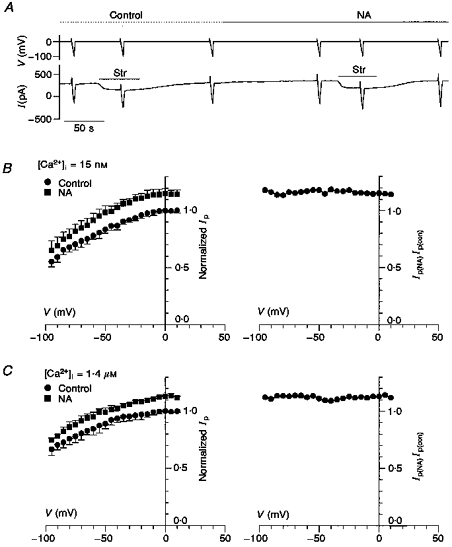Figure 5. The voltage dependence of Ip is not shifted by NA when [Ca2+]i is either high or low.

A, the ramp protocol for determining the voltage dependence of Ip. In the upper voltage trace, the cell is held at 0 mV, stepped to +20 mV then ramped to -100 mV in a period of 5 s. The lower trace is the current response to the voltage clamp protocol. The ramp protocol was done in the absence of Str where the response included the background membrane current plus Ip, in the presence of Str where the response was only the background membrane current, and lastly again in the absence of Str to verify the cell was not running down. This protocol was repeated in the presence of NA (10 μm NA in low [Ca2+]i and 1 μm NA in high [Ca2+]i). B, the voltage dependence of Ip is not shifted by NA when [Ca2+]i is low (15 nm). Ip was determined by subtracting the ramp current response in the presence of Str from that in the absence of Str. In each cell, Ip was normalized by its value at 0 mV in the absence of NA (in 5 cells the mean pump current was 170 ± 44 pA). This procedure removes cell-to-cell variation in pump density and membrane area. The normalized pump currents were averaged, and in the left-hand panel normalized Ip in the presence of NA is shown by ▪, whereas the normalized Ip in the absence of NA (Control) is shown by •. The right-hand panel graphs the ratio of the two curves shown in the left-hand panel. The lack of voltage dependence for the ratio indicates a uniform NA stimulation of about 15 % with no voltage shift. C, the voltage dependence of Ip is not shifted by NA when [Ca2+]i is high (1.4 μm). The data were recorded and analysed as described in B. In 4 cells the mean pump current at 0 mV was 160 ± 40 pA. Again, the lack of voltage dependence for the ratio of Ip(NA)/Ip(con) indicates a uniform NA stimulation with no voltage shift.
